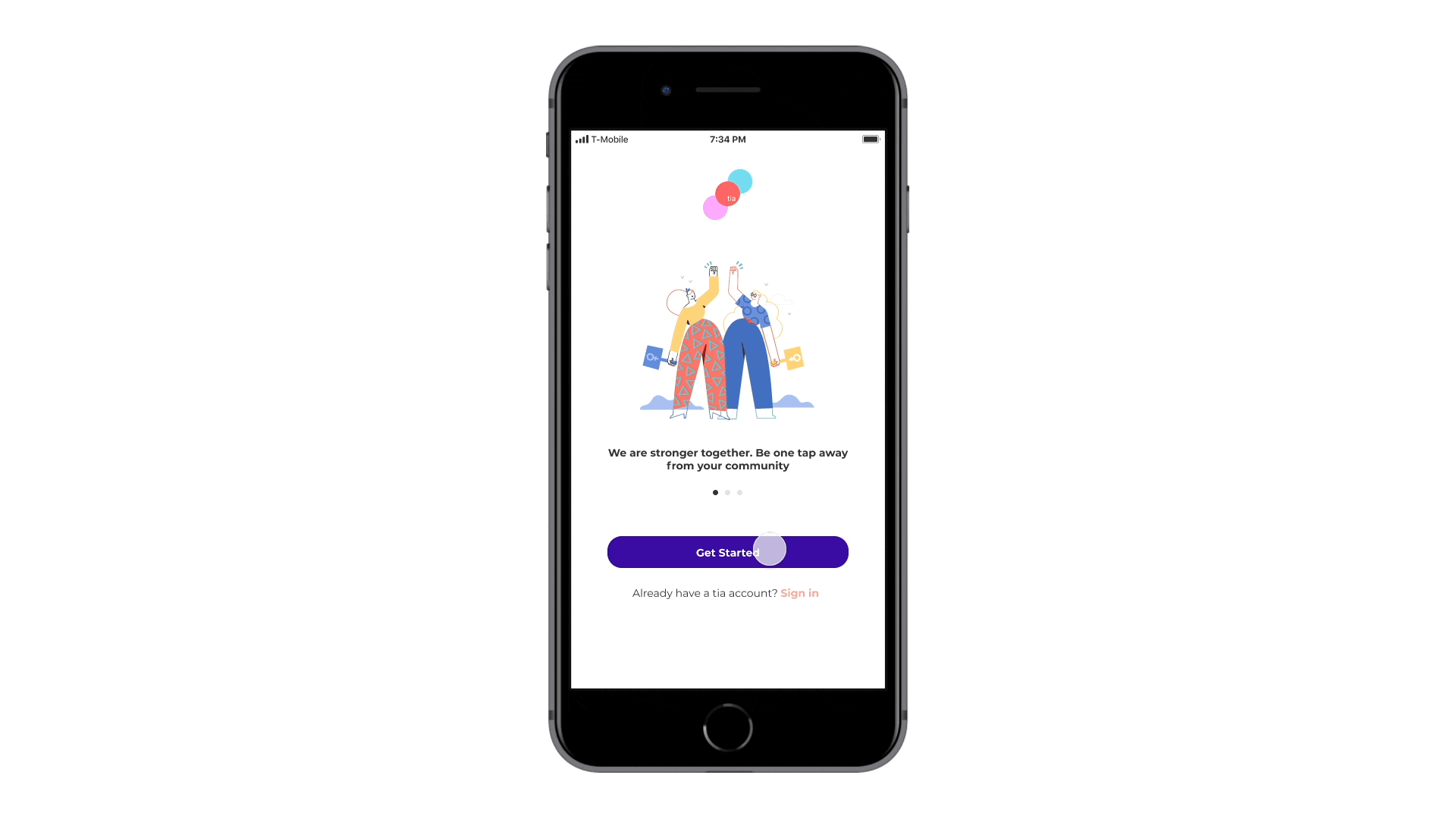TIA
Going from 0 -> 1 with user research
Project Overview
Client: Triumphant2Gether. An advocacy group that focuses especially on helping women including trans women who face violence.
Platform: Mobile Application
Team: PM & UX Designer
Role: UX Designer
Duration: 1 Month of 1 Week Sprints
Outcomes: An iOS native mobile app that provides personal safety features such as location tracking, S.O.S alerts, and timeline tracking.
Measuring Success
By compiling and analyzing data on the issues that our users faced, I understood that our they generally had strong networks they relied on for safety and assistance. We did our best to solution with community as our northstar. Some areas where we could measure the impact of our solutions:
Community Impact. Measuring rates of user downloads against violent crime rates in communities or active users around times of day when assault/violence tend to take place
Community Growth. Although users may have downloaded the app for a specific use case or time, are users continuing to use TIA for their safety? If not, how can we expand use cases?
User Testing. When we tested our application with the users we built it for, they expressed a 95% willingness to adopt our solutions.
User Research
The users we were designing for were LGBTQ, POC, women, and sex workers who faced issues concerning personal safety. I sent out a user survey, and I conducted multiple hours of interviews with them. My objectives in speaking to them were to understand their challenges in depth.
How valuable is location sharing?
Breakdown: A majority of the users were convinced of the high value of real-time location sharing. While slightly more people were in-between about its value. A black trans woman had the following to say:
"You have to also look at the majority of trans women of color, we're not used to being monitored or, you know, we don't like folks tracking us..."
However, this user did admit it might be useful to keep track of her 14 year old nephew. Only a very small percentage of our users were unconvinced of the value of such a feature. This was a good indicator location sharing had a place in our MVP.
Takeaways:
Safety > Privacy. For the sake of ensuring safety, users were more than willing to share information about their whereabouts with chosen parties.
New is threatening. Going on dates, meeting new people out, going to new places was considered pretty dangerous for some of the folks we talked to.
Users envisioned different use cases for the same features such as location sharing and SOS features based on their experiences.
Debbie
I used quantitative and qualitative findings from our users to create personas and user journeys. These empathy artifacts were instrumental in creating a mental map of our users, their needs, and ways TIA might help fill their needs.
Debbie, Sex Worker
Motivations:
Dangerous job
Desire to protect herself and others
Frustrations:
Does not trust law enforcement or the judicial system
Discrimination for her work and her identity
Faces discrimination from law enforcement and the judicial system
Goals:
Ability to advocate for herself effectively
Receive protection she can trust
Access to legal, health, and safety tools for herself and others
Meeting a Stranger
A key user journey was mapping Debbie going on a date with a new person and meeting them out in public. We imagined the ways our application could improve safety for the persona.
User Flows
These flows were designed by referencing competitor applications in the safety and tracking space, but we also used our research to guide our feature selection. We again and again thought through the privacy aspect of personal safety. A good example of how research influenced our decision making: If a user is invited to a pod, they have the functionality to leave the pod at any time.
Outcomes
TIA allows users to maintain privacy while still prioritizing their safety. Location tracking can be turned off at any time, and it is reliant on the user who owns the pod to do so. It’s a way to share location, not broadcast it.
Users can create a pod and add trusted folks to their pod. From there, location tracking and SOS alerts are enabled. This allows users to maintain privacy while still prioritizing their safety






